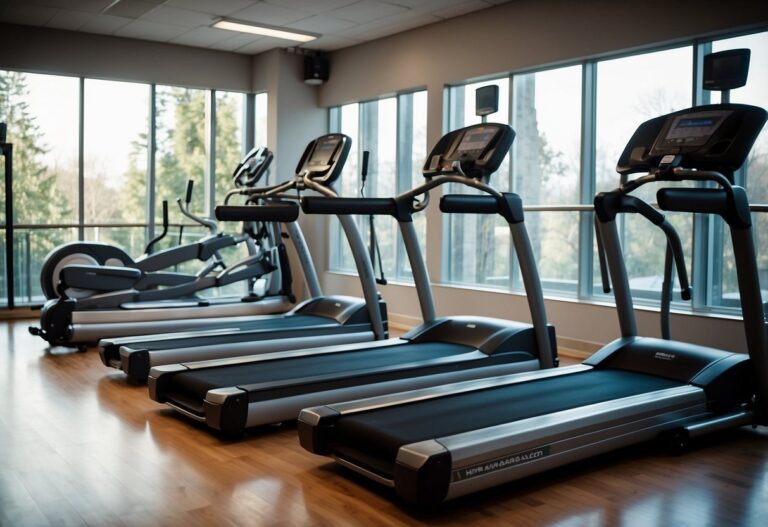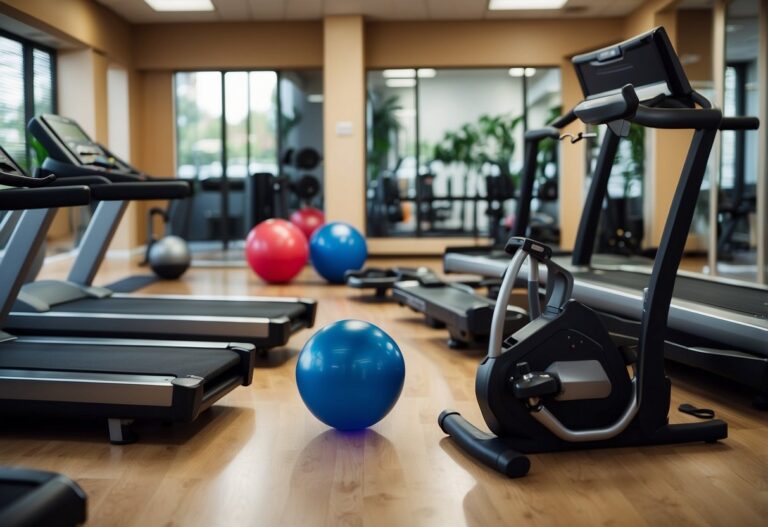Starting a gym routine can be daunting, but focusing on a manageable plan can make all the difference. If you’re looking to optimise your workouts without spending every day in the gym, a 3-day workout routine might be the perfect solution. This approach allows you to build muscle, increase endurance, and improve overall fitness without overwhelming your schedule.

A well-structured 3-day gym workout targets different muscle groups on different days, ensuring balanced development and recovery. It is particularly suited for beginners and those with busy lifestyles who still want to see significant results. By committing to just three days a week, you can achieve a healthier and stronger body while maintaining enough time for rest and daily activities.
Plan a balanced routine
When planning a 3-day gym workout routine, it’s important to balance your exercises.
Day 1: Focus on pushing movements like bench presses and shoulder presses. These will work your chest, shoulders, and triceps. You can find a detailed guide on such routines at Olympic Muscle.
Day 2: Dedicate this day to leg exercises. Squats, lunges, and leg presses are great choices. Make sure to include varying weights and reps for best results. A good example of leg workouts is detailed by The Fitness Phantom.
Day 3: Focus on pulling movements. Think of exercises like pull-ups and rows to work your back and biceps. This helps you balance the push and pull dynamics needed for muscle growth. For more insights, see Muscle and Strength.
Rest between these days to recover and maximise your progress.
Focus on Compound Exercises
When you’re working out three days a week, compound exercises are your best friend. These movements work multiple muscle groups at once, making your workouts more efficient.
For instance, squats target your quads, hamstrings, and glutes, while also engaging your core.
Bench presses are another great compound move. They primarily work your chest but also hit your shoulders and triceps.
Incorporating compound exercises like these can help you see better results in less time. You’ll build strength and muscle efficiently, making the most of your time at the gym.
For a well-rounded routine, try including exercises like deadlifts, pull-ups, and overhead presses.
Allow Time for Rest and Recovery
Rest is crucial for muscle repair and growth. When you exercise, tiny tears happen in your muscles. Rest lets these tears heal and your muscles get stronger. Aim for 48-72 hours of rest between intense workouts.
Even if your muscles feel fine, your nervous system might still need a break. Without rest, you risk overtraining which can lead to injuries.
Consider active recovery on your rest days. Light activities like walking or yoga can keep you moving without stressing your muscles too much. Check out more about active recovery for ideas.
How to Structure a 3-Day Gym Workout Routine

Creating a 3-day gym workout routine involves selecting the right exercises and balancing muscle groups. You will have dedicated days for pushing, pulling, and leg exercises, ensuring a balanced approach to fitness.
Choosing the Right Exercises
When planning your workout routine, you need to focus on exercises that target specific muscle groups efficiently. One option is following a push/pull/legs split. A push day includes chest, shoulders, and triceps exercises, like bench presses and shoulder presses. A pull day targets the back and biceps, using movements such as rows and bicep curls. Finally, leg day focuses on lower body exercises like squats and lunges.
Using a mix of compound and isolation exercises can provide great results. Compound exercises like squats and deadlifts engage multiple muscle groups, enhancing overall strength. Isolation exercises, such as tricep extensions, refine specific muscles.
Try to prioritise exercises that you enjoy and can perform with proper form. Consistency in your routine will lead to better results. Tailor your routine to your individual fitness goals, whether it’s building muscle, losing fat, or improving endurance.
Balancing Muscle Groups
Balancing muscle groups in your workout routine prevents imbalances and reduces the risk of injury. On your push day, ensure that you include exercises not just for the chest but also for shoulders and triceps. Don’t overload one muscle group while neglecting others.
For pull days, focus equally on upper, middle, and lower back exercises. Include movements like pull-ups, rows, and lower back extensions. Also, integrate bicep exercises to complete the session.
Leg day should cover all major muscle groups in the lower body. Incorporate quadricep exercises like squats, hamstring exercises like deadlifts, and calf exercises such as calf raises. This ensures that all parts of your legs are equally strengthened.
Incorporating a balance of exercises helps in maintaining symmetry in your physique. Alternate muscle groups to allow each to recover properly, preventing overuse injuries.
For more detailed ideas on structuring a workout, check resources like the 3-Day Workout Split Guide and the 3-Day Workout Routine.
Benefits of a 3-Day Gym Workout Schedule
A 3-day gym workout schedule offers a balanced approach to fitness by providing ample rest and consistency. It can improve recovery time and create a sustainable commitment to exercise.
Improved Recovery Time
Working out three days a week allows your muscles to recover better between sessions. This is crucial for muscle growth and preventing injuries. When you push your body without enough rest, you risk overtraining.
Recovery days give your muscles the chance to repair and become stronger. For instance, if you have a hard leg day, taking the next day off lets your legs recover, which helps you perform better in your next workout.
Better recovery also means you can work harder when you are at the gym. You’ll be more energised and motivated, making each session more effective. Plus, well-rested muscles are less likely to suffer from strains or other injuries, making your fitness journey smoother.
Sustainable Commitment
A 3-day workout schedule is easier to maintain over the long term. Committing to daily gym sessions can be overwhelming, especially with a busy lifestyle. By having your workouts spread out, you balance fitness with other life commitments.
This can lead to better long-term adherence. It’s easier to stay motivated when you’re not feeling burned out from daily sessions. You’ll look forward to your gym days instead of dreading them.
A realistic schedule also helps in building a routine. Knowing that you have set days for workouts makes it simpler to stick to your plan. This consistency is key to seeing results and staying fit.
Using a structured routine like this can also effectively target different muscle groups without feeling rushed. This way, every workout feels purposeful and manageable.
By choosing a 3-day gym schedule, you can make fitness a regular part of your life without it becoming a burden.
Tips for Maximising Workout Efficiency

To get the most from your three-day gym routine, you need to make every minute count. Focus on warming up properly and using progressive overload to build strength and avoid injury.
Proper Warm-Up Techniques
Warming up is crucial. It prepares your muscles and joints for the workout ahead. Start with five to ten minutes of light cardio, such as jogging or jumping jacks. This will increase your heart rate and get blood flowing to your muscles.
Dynamic stretches are also important. Perform movements that mimic the exercises you’ll be doing, such as leg swings and arm circles. This improves your range of motion and flexibility.
Make sure to engage in muscle activation exercises. For example, do glute bridges before a leg workout to ensure your glutes are properly activated. This helps in preventing injuries and ensures that the targeted muscles are effectively worked during your session.
A proper warm-up routine can significantly improve your workout quality and help you avoid setbacks.
Using Progressive Overload
Progressive overload is the key to building muscle and strength. It involves gradually increasing the weight, reps or intensity of your workouts over time. Start with a weight you can handle comfortably and focus on your form.
Each week, try to add a little more weight or do one more rep. This keeps your muscles challenged and promotes growth. For example, if you’re doing bench presses, increase the weight by 2-5 kg each week.
Keep a workout log to track your progress. This helps you stay motivated and see how far you’ve come. Remember, small, consistent increases are more effective than big jumps in weight.
Also, mix up your exercises to target different muscle groups and prevent plateaus.
For more detailed routines, you might find this 3-day gym workout routine guide helpful.







